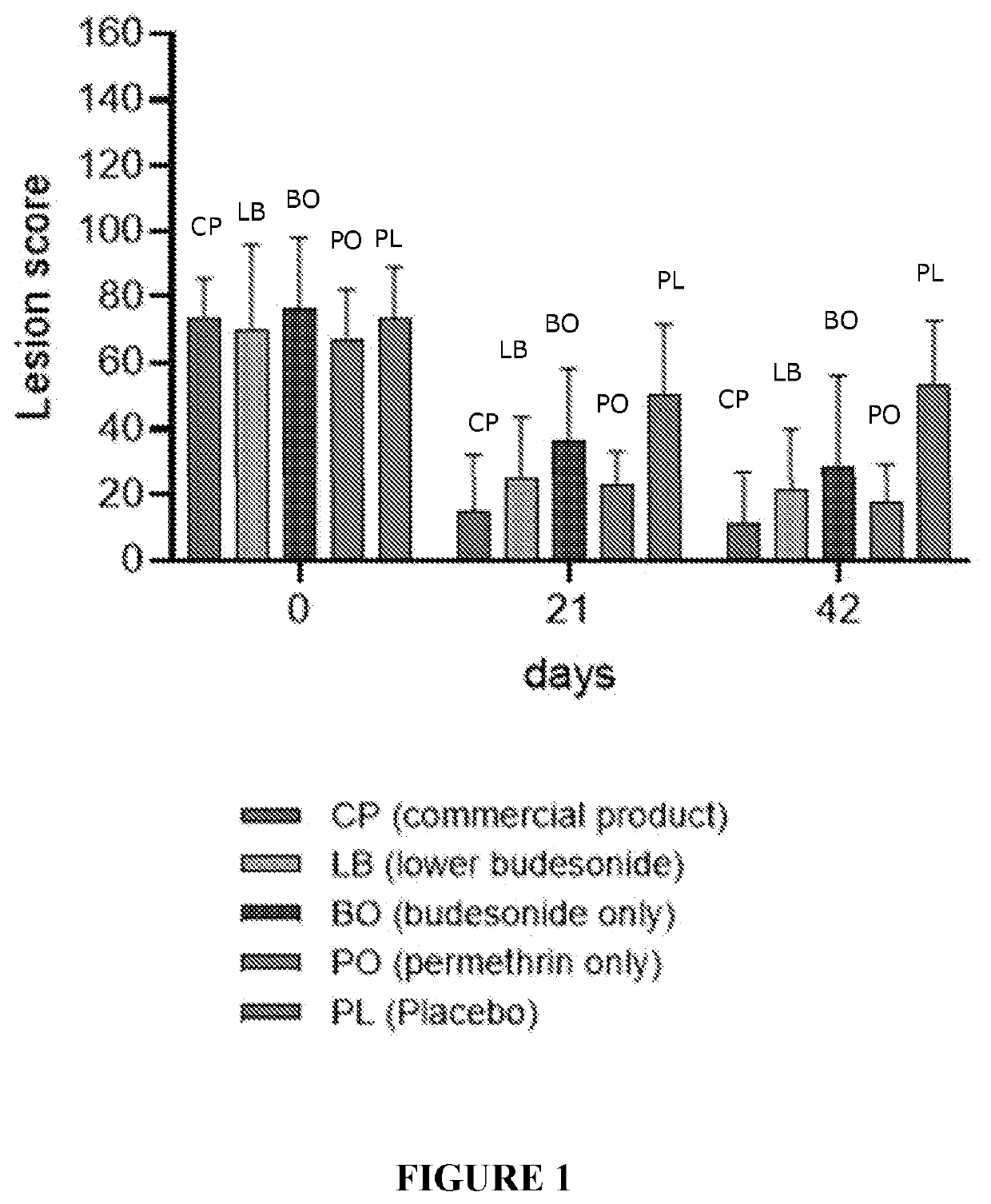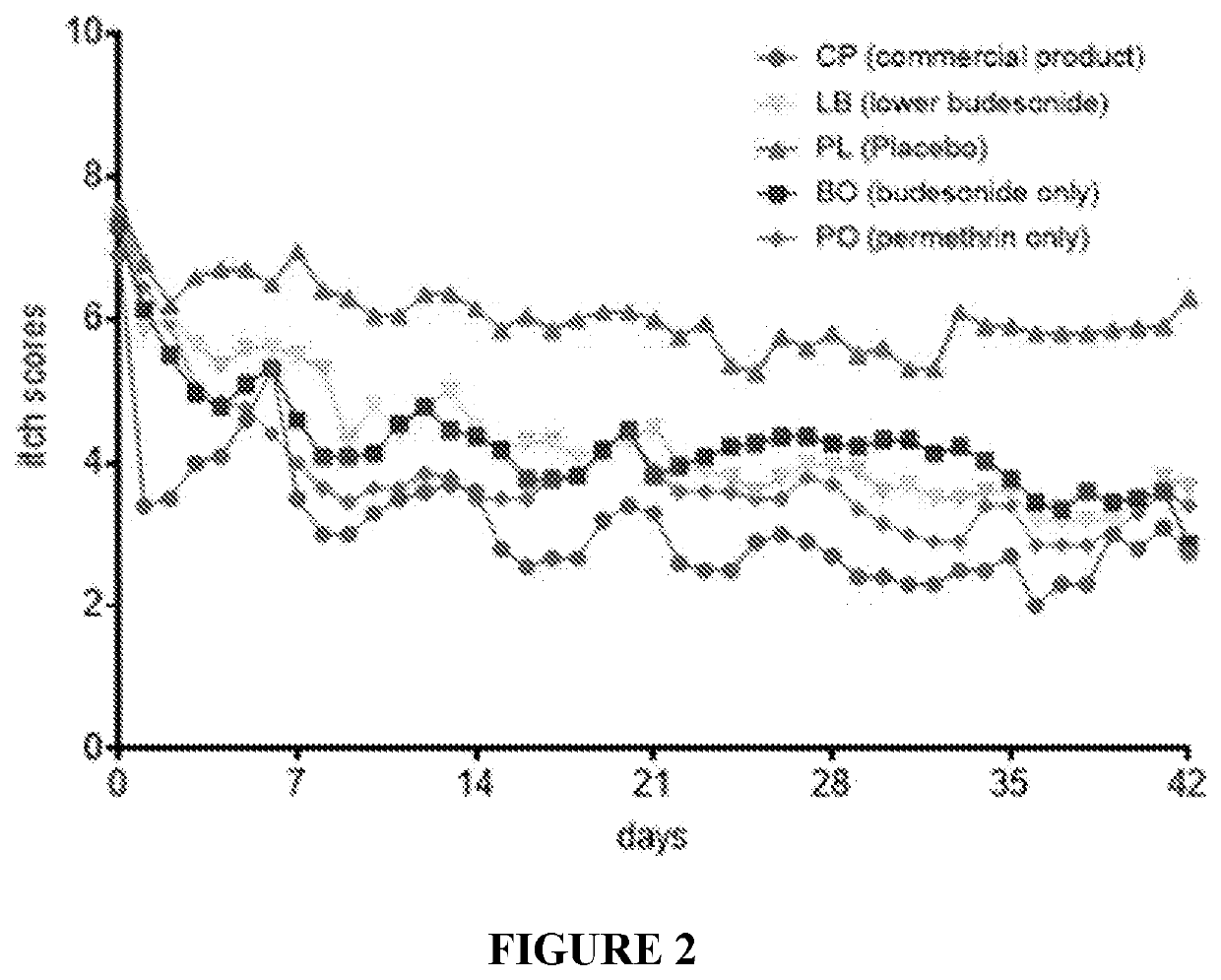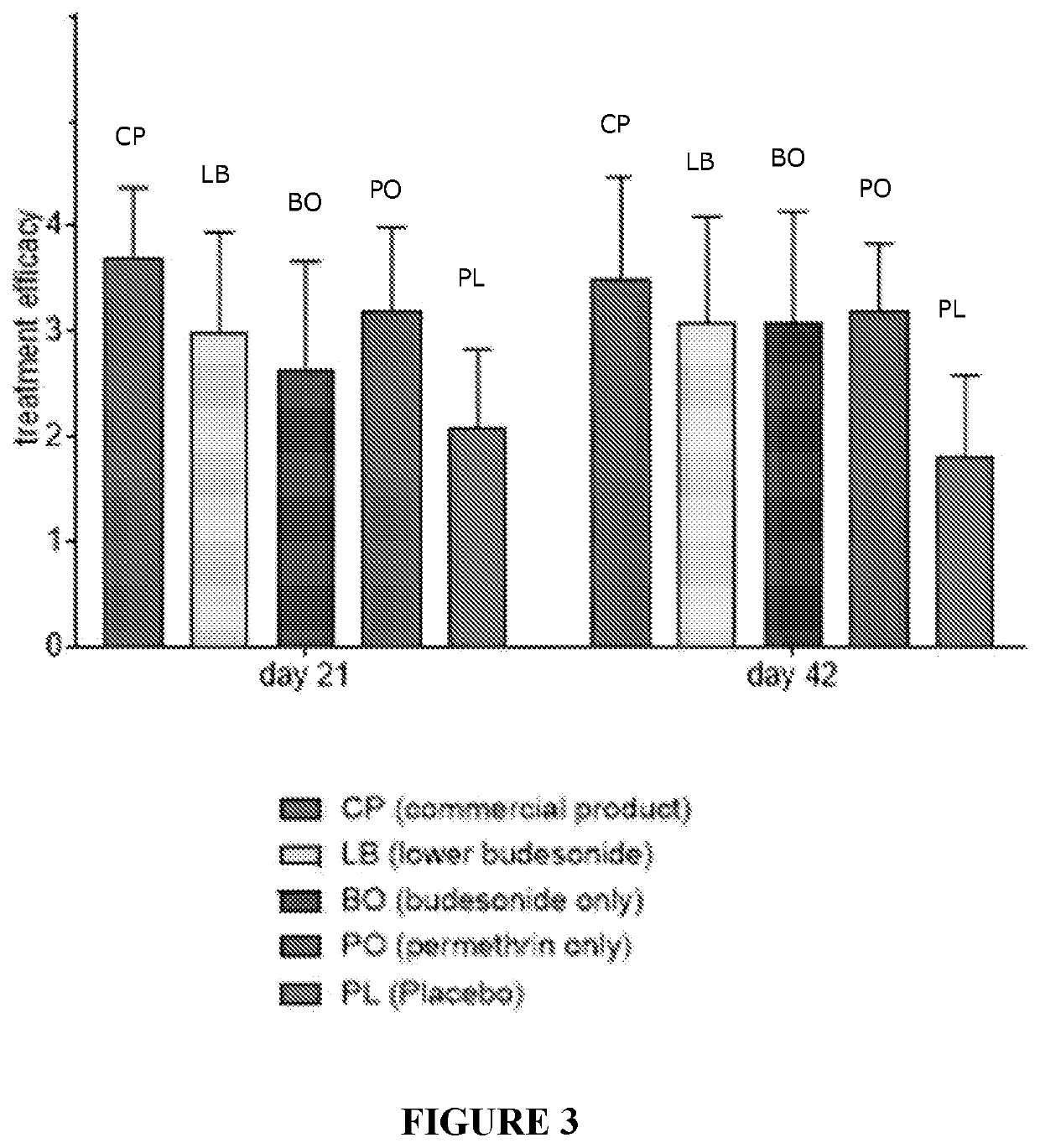Pharmaceutical compounds and methods of use
- Summary
- Abstract
- Description
- Claims
- Application Information
AI Technical Summary
Benefits of technology
Problems solved by technology
Method used
Image
Examples
example 1
Preparation of Pharmaceutical Composition (IVP)
[0180]The following commercially available ingredients were combined with mixing in a homogenizer:[0181]budesonide [corticosteroid; 0.25 g];[0182]permethrin [insecticide; 25:75 cis:trans; 40 g];[0183]cyclotetrasiloxane / cyclopentasiloxane mixture (Xiameter® PMX-0344) [silicone excipient / conditioner; 60 g];[0184]13% solution of hydroxy terminated polydimethylsiloxane in cyclopentasiloxane and cyclotetrasiloxane (Xiameter® PMX-1401) [viscous silicone conditioner, 15 g];[0185]Polyquaternium-37 / propylene glycol dicaprate dicaprylate / PPG-1 Trideceth-6 (Salcare® SC96) [thickening agent; 30 g];[0186]oleoyl macrogel-6 glycerides (Labrafil® M 1944) [solubilizing agent, surfactant; 20 g];[0187]ethylenedinitrilotetraacetic acid disodium salt, dehydrate [chelating agent; 1 g];[0188]N-methylpyrrolidone [solubilizing agent; 50 g];[0189]propylene glycol [solubilizing agent; 30 g];[0190]2-(2-ethoxyethoxy)ethanol [solubilizing agent; 50 g];[0191]butylate...
example 2
Efficacy Studies
[0195]Clinical studies were carried out using the formulation of Example 1 in horses suffering from Queensland Itch. Thus, horses suffering Culicoides allergy were treated topically in a blinded trial carried out to Good Clinical Practices standard in accordance with GCP International Cooperation on Harmonisation of Technical Requirements for Registration of Veterinary Medicinal Products (VICH) Guideline 9′, 15 Jun. 2000. This randomized, placebo-controlled study investigated the efficacy of the leave on conditioner of Example 1 (CP) containing budesonide and permethrin, which was aimed to treat culidoides hypersensitivity (Queensland Itch, sweet itch, QI) in horses. CP has two active ingredients, budesonide (steroid alleviating itch and inflammation) and permethrin (insect repellent). Horses were treated with commercial product (CP), Placebo (control, excipients only, PL) and three comparative products that had variable levels of active ingredients. Lower budesonide...
PUM
 Login to View More
Login to View More Abstract
Description
Claims
Application Information
 Login to View More
Login to View More - R&D
- Intellectual Property
- Life Sciences
- Materials
- Tech Scout
- Unparalleled Data Quality
- Higher Quality Content
- 60% Fewer Hallucinations
Browse by: Latest US Patents, China's latest patents, Technical Efficacy Thesaurus, Application Domain, Technology Topic, Popular Technical Reports.
© 2025 PatSnap. All rights reserved.Legal|Privacy policy|Modern Slavery Act Transparency Statement|Sitemap|About US| Contact US: help@patsnap.com



